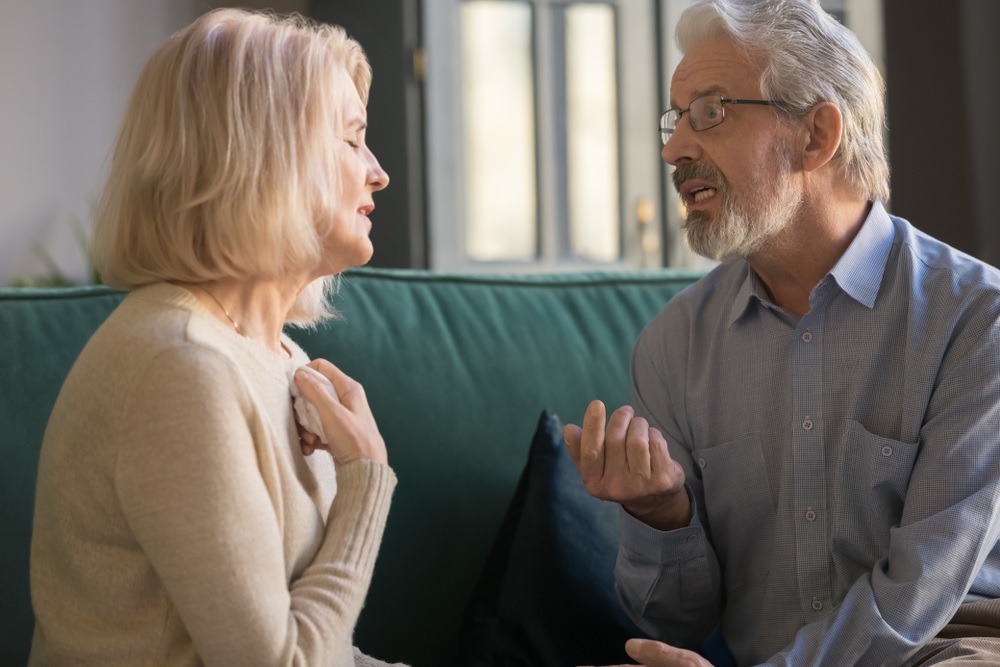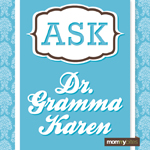
I was lying on the floor doing my stretching exercises, when all of a sudden, I felt sick with dizziness, nausea, and overall weakness. My first thought was, “Well, so much for all the good social distancing has done me. It got me anyway,” it referring to Covid-19. As I was dragging myself to my bed, my second thought was, “No ventilator.”
While my husband Gary was taking my temperature, I was thinking about two articles I had recently read: one article explained the risks involved when placed on a ventilator, and a second discussed possible long-term effects with ventilator usage. After digesting these articles, as well as others I read, I decided I did not want to be placed on a ventilator. Ever.
I was also thinking about how I had put off sharing this decision with my husband, because although we’ve been married for 54 years, I wasn’t sure how he would react.
I soon found out one afternoon on our daily walk when I told him I wanted to share with him the decisions I had made regarding the coronavirus, should I contract it. I explained that I did not want to go to a hospital, I did not want to be put on a ventilator, and that I wanted to be in my own bed in our own home, with him holding my hand, while I recovered. Or didn’t.
He was very upset with my decisions, telling me that he always considered me tough and a fighter. I told him I needed to deal with the coronavirus on my own terms, that I did not want to be alone in a hospital hooked to a ventilator. He angrily asked if I expected him to watch me as I struggled to breathe. Things were pretty heated at this point, but he did agree to read the articles on ventilators I had read, and then we would talk again.
After reading the articles about the limitations and dangers of being on a ventilator, and although he didn’t like my decision, he said he now better understood it. He said he wanted to talk with his doctor about ventilators and how the two of us were at odds.
His doctor confirmed that about 80% of those on ventilators die. He pressed his doctor further: Of the surviving 20%, how many could enjoy a complete recovery? “Practically none,” said his doctor, “as there are almost always quality-of-life residual problems.” When Gary asked his advice about what we should do about our disagreement, his doctor explained that should either of us think we have the coronavirus, we should first call our respective doctors, who would most likely send us to our local emergency room, which he knew had quick turnaround coronavirus testing.
The doctor explained that with the testing results in hand, decisions could be made about whether treatment in the hospital or at home was recommended, but either way, prescriptions could be written to ease the symptoms. However, the class of drugs known as opioid (narcotic) analgesics would have to be administered in an approved medical setting. He explained that no one is ever forced to be put on a ventilator.
Around this same time, Gary and I read another article that proved helpful because it explained how we could lessen the chances of the coronavirus reaching the point at which a ventilator is needed by measuring the amount of oxygen in our blood. This measurement was something we could take ourselves by using a simple device called a pulse oximeter. We purchased one online, but there are also oxygen saturation applications available on smart phones. Tracking the oxygen in our blood is quick way to help assess if we are in danger of developing covid pneumonia, a condition often requiring the use of a ventilator.
So, here’s where we are: although I remain pretty sure that I do not want to be placed on a ventilator, I have stopped saying I would never allow myself to be placed on one. Gary is relieved that I am more open to the possibility. Of course, we hope we never contract Covid-19 and have to decide whether to go on a ventilator, but we’re both pleased that we’re communicating with each other our fears, thoughts, and possible decisions regarding issues and treatments.
Oh, that dizziness, nausea, and overall weakness I mentioned? I quickly figured out it was not the coronavirus, but rather, it was vertigo, something I’ve had twice before. It passed in a few hours, and it was back to social distancing, wearing masks, measuring the oxygen levels in our blood, and keeping ourselves informed.
So, all in all, we’re feeling better prepared to deal with the coronavirus now that we’re armed with more information and specific actions we can take. For example, here is our “coronavirus kit,” containing a list of all our doctors, information for contacting health and coronavirus testing services, thermometers, pulse oximeter, and over-the-counter medications to relieve symptoms.

Ask Dr. Gramma Karen is published every other Tuesday.
E-mail queries to Karen@mommybites.com
Dr. Rancourt’s most recent book is,
Its All About Relationships: New Ways to Make Them Healthy and Fulfilling, at Home and at Work

Read Next | This Is Where You Can Find an Amazing NY Nanny
Like what you read? JOIN the Mommybites community to get the latest on FREE online classes, parenting advice, events, childcare listings, casting calls & raffles, and our Parents With Nannies Facebook group. SIGN UP NOW!



